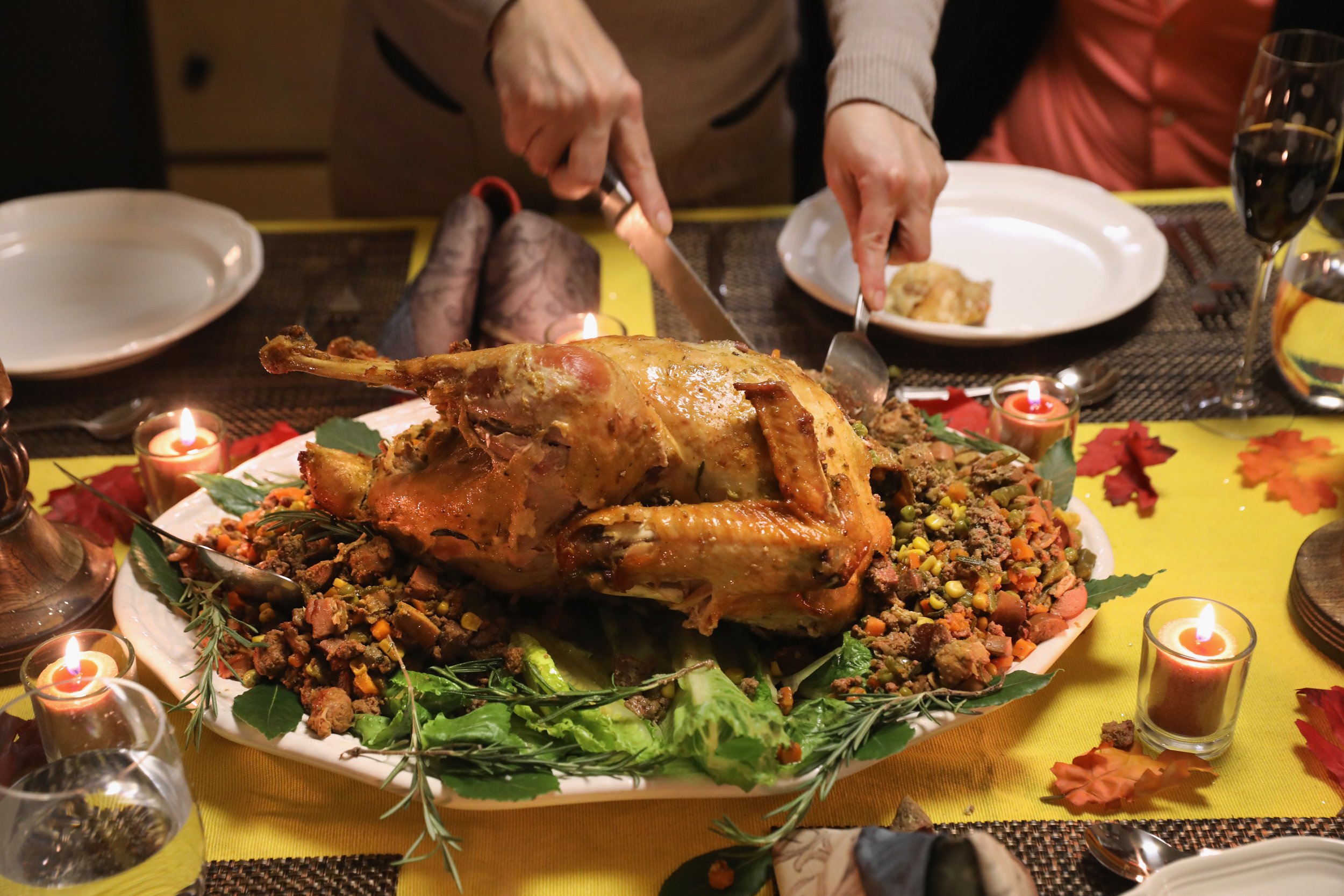
Hosting Thanksgiving dinner can be daunting, especially for those who have never cooked a turkey. There's a lot of pressure to make sure your bird is not only moist, but also aesthetically pleasing, as it is the star of the meal. But cooking a turkey isn't that much harder than, say, making macaroni and cheese from the box, according to poultry savant Janice Stahl, a supervisor at Butterball's Turkey Talk Line. She helps manage phone inquiries and social media calls for help.
Related: This Thanksgiving Dinner is Made Entirely of Pringles, But You Can't Buy it Anywhere
"It's really one of the easiest things you'll ever make," she told Newsweek.
According to Stahl, cooking the perfect bird comes down to just five steps:
Defrost the Right Way
One of the biggest mistakes occurs even before people turn on the oven. Stahl says it's common for budding chefs to leave the turkey on the counter—or in the garage. Neither of these methods is advised (or safe).
"I had a call from someone who left it out for 12 hours," she said. "Unfortunately she ruined her turkey."
USDA safety recommendations advise that turkeys must retain a temperature of at least 40°F.
So if leaving your bird in the garage is out, then what is right way to defrost? Stahl believes refrigerating is optimal and prescribes one day for every four pounds. Alternatively, you could place it in cold water, breast side down. Just make sure to keep it in the package and submerged for 30 minutes per pound.
Use a Thermometer
If you don't want the in-laws complaining about dry turkey, then do yourself a favor and use a thermometer. Stahl says this is the only way to ensure your meat reaches the proper temperature.
"This is where dry turkey comes in," she said, explaining people often fret about undercooking and leave it in the oven longer than necessary. "That's where you hear that the turkey was really dry this year."
For a safe, and moist, bird, the correct internal temperature is 165°F, according to the Centers for Disease Control. Be sure to measure the inner thigh, wing and thickest section of the breast.
If for some reason you fail to heed this advice and find yourself without a thermometer, you can try pricking the outer drumstick. If clear liquids flow from the carving, you're probably fine, but this is no way accurate or a good thermometer replacement.
Don't Start Baking Too Early
Stahl reveals that many home chefs are shocked to discover there's no need to begin cooking at 5 a.m., unless you want to eat by mid-morning. A turkey can be finished in only three hours.
The USDA offers a chart to help demystify cooking times based on turkey weight. An 18 pound bird, for example, roasts in roughly 4.5 hours.
Don't Stray Too Far from the Tried and True
While deep frying and spatchooking (a process that involves removing the bone and flattening the bird for a quicker cook time) have become popular in culinary magazines, Stahl explains these techniques can be troublesome for new chefs. Instead, traditional roasting is a pretty safe bet, as long as you follow the defrosting and temperature guidelines.
To ensure the main dish has plenty of flavor, she recommends creating your own herb butter with sage, rosemary, oregano, meno zest and garlic. Be sure to spread directly onto the meat as the skin is waterproof and will prevent the flavor from seeping in.
Fix Last-Minute Mistakes
Maybe you're not a planner, or maybe the week leading up to Thanksgiving was overwhelming and delayed your shopping plans, but chances are a few of us will frantically hit the supermarket right before the big day. For the procrastinators, there is hope: you can cook a partially frozen turkey.
"You need to make sure that the turkey reaches 140 degrees within four hours," Stahl advised. "It means that it's gotten out of the danger zone."
Any longer than that and you risk getting sick.
Of course, making your family suffer through weeks of turkey sandwiches, soups and casseroles is a vital part of any Thanksgiving. Keep leftovers fresh by removing meat from the bones and storing within two hours of cooking.
How to safely roast a turkey in four steps, according to the USDA
- Set your temperature to at least 325 °F
- Place the turkey in a roasting pan breast side up
- Check internal temperature to ensure it reaches 165 °F.
- Wait 20 minutes before carving
Uncommon Knowledge
Newsweek is committed to challenging conventional wisdom and finding connections in the search for common ground.
Newsweek is committed to challenging conventional wisdom and finding connections in the search for common ground.
About the writer
Melissa is a science writer covering health for Newsweek and has contributed to Inc., Dr. Oz The Good Life, Men's Fitness, Marie Claire and others. She earned ... Read more
To read how Newsweek uses AI as a newsroom tool, Click here.








